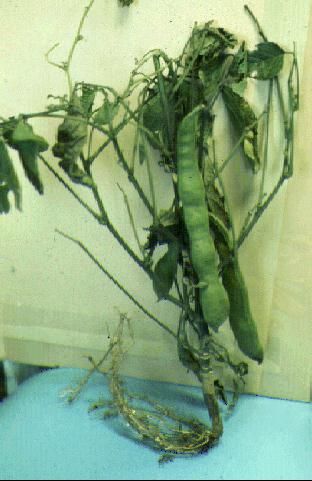Bean, Jack—Canavalia ensiformis (L.) D.C.Bean, Sword—Canavalia gladiata (Jacq.) D.C.1
The jack bean and the sword bean are very similar and are occasionally grown in home gardens around the state. Other names for them are Chickasaw lima bean, Brazilian broad bean, coffee bean, ensiform bean, horse bean, mole bean, go-ta-ki, overlook bean, Pearson bean, watanka, and raba de burro.

Credit: James M. Stephens
Description
In both species, pods reach a length of 10 to 14 inches, and a width of 1 to 1½ inches. Seeds are large, ½ to ¾ inch long and nearly as broad. The two species differ mainly in the length of the seed hilum (scar). The hilum of sword bean (C. gladiata) is more than one-half the length of the seed, whereas that of the jack bean (C. ensiformis) is only about one-third as long as the seed. Most of the jack beans sent to the University of Florida for identification were white with a black seed scar, while the sword beans were red seeded.
Culture
There probably are many varietal and environmental variations in the growth habit of the plants; however, it appears that the jack bean plant is bushy in comparison with the vining nature of the sword bean plant. One north Florida gardener noted that one sword bean plant covered his entire garden of 400 square feet.
Use
Neither bean has commercial importance in this country. Both are reported to be edible in the young, tender, immature stage when the pods are sliced and boiled or peeled so the seeds can be used as broad beans. Also, reports have indicated the possibility of mild toxicity of beans when eaten in large quantities. Because of this, the boiling water should be drained off to remove any poisonous substances coming from the beans. Pharmaceutical companies have shown some interest in the beans as a possible source of the enzyme urease, and a few acres have been tried in Florida for that purpose.


